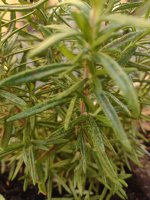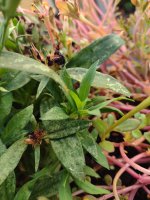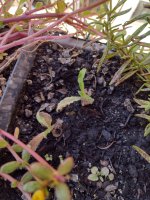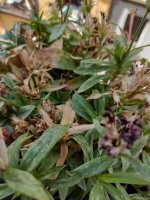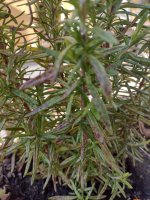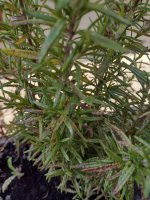Hello! I'm wondering why all the plants in my balcony flowerbed look like they do on the photos I'm attaching... They all have those tiny white spots all over. I'm sure it's some sort of disease or fungus because it's happening on all 3 kinds of plants I have there. And I guess one of them passed it on to the others, because there are no other plants near them (not mine or my neighbours'). But sure enough, now all of them look the same. First it was one, the Dear William pictured, then the rosemary, and so on. They seem healthy enough (or healthy-ish) aside from the spots, but obviously this isn't normal. I'm afraid whatever it is might keep on getting worse and end up killing them and even spreading to other plants I have inside my apartment (that are completely fine up to now).
I'm currently living in Spain and it's the driest place I've ever been in. So any smattering of rain or sprinkle of water on the leaves dries completely in a matter of minutes. So can it really be fungus if it doesn't stay humid? On the other hand, maybe it has something to do with the heat? My balcony faces NNW, so they do get a bit of sun around the evenings. I never water when the sun is on them or it's too hot outside. They've been getting regular water this month that it's been REALLY hot. But now I'm laying off a bit.
Thanks in advance for any input!
I'm currently living in Spain and it's the driest place I've ever been in. So any smattering of rain or sprinkle of water on the leaves dries completely in a matter of minutes. So can it really be fungus if it doesn't stay humid? On the other hand, maybe it has something to do with the heat? My balcony faces NNW, so they do get a bit of sun around the evenings. I never water when the sun is on them or it's too hot outside. They've been getting regular water this month that it's been REALLY hot. But now I'm laying off a bit.
Thanks in advance for any input!


